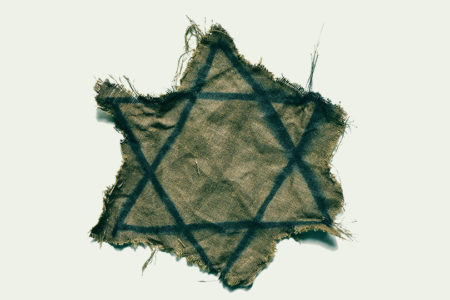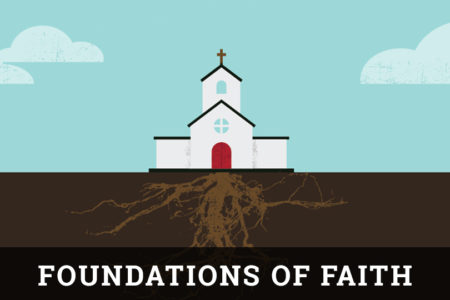Tenach, Torah, & Targum
The Torah is the foundation stone for the Jewish people. Inspired by God and written by Moses, it has been central to Jewish life since its inception. The desire to read and understand the Word of God is biblical, established at a time in Jewish history when the people were aware of their need to get back to the basics of their faith. Nehemiah 8:1–8 records that the people were gathered together as Ezra the scribe brought out the book of the Law of Moses. He then faced the street, standing before the Water Gate, and read aloud from morning until midday, as the people stood listening. Nehemiah made it a point to explain that the priests caused the people to understand.
That event, which took place some 2,400 years ago, demonstrated a desire to know God and understand His Word. The Jewish people of that day, however, would find it difficult to identify with their contemporaries of the 20th century. Jewish literature has had a profound effect on its people regarding the practice and beliefs of their faith. Alfred Kolatch put it well when he said (speaking of a Jew in Solomon’s or Moses’ day), “Our visitor from the past would have to learn that the laws of the Bible, although primary and central, are not the only source of Jewish practice.”
This article and those to follow in this feature in the next two issues will examine the literature that has so affected the Jewish people. Starting with the Torah and branching beyond, we will survey various writings and the effects they have had on the Jewish people.
When referring to the Holy Scriptures, the Jewish people do not think in terms of Testaments. The Bible, or Tenach, is divided into three divisions. The Torah, or Law, is made up of Genesis, Exodus, Leviticus, Numbers, and Deuteronomy. The Nebi’im, or Prophets, is comprised of the historical books of Joshua, Judges, 1 and 2 Samuel. 1 and 2 Kings, the major prophets Isaiah, Jeremiah, and Ezekiel, and the minor prophets Hosea, Joel, Amos, Obadiah, Jonah, Micah, Nahum, Habakkuk, Zephaniah, Haggai, Zechariah, and Malachi. The Kethubim, or Writings, are divided into the Wisdom Books of Psalms, Proverbs, and Job and the Megiloth, consisting of Song of Songs, Ruth, Lamentations, Ecclesiastes, and Esther. Also included in the Kethubim are the prophets Ezra, Nehemiah, and Daniel and the history books of 1 and 2 Chronicles. The word Tenach is formed from an acrostic, using the first letter of each of the three divisions, T-N-CH, to signify the whole Bible.
The Torah is held in high esteem for two reasons. First, the author is God, sometimes referred to as the “King of the Universe.” Second, the content covers the topics that are most relevant to everyday practical living—family, civil law, and theology.
The word Torah means teaching or doctrine. There is a tradition that the Torah was in existence in heaven and was merely brought down to Moses at Mount Sinai. It may be this belief that causes some to consider the Torah more authoritative than the other two parts of the Jewish Scriptures. Another tradition holds that God offered the Torah to all the nations of the world, but all refused it except Israel.
The Old Testament, as we know it, contains 39 books, yet the Jewish Scriptures have been arranged into 24 books. The 12 minor prophets are counted as one book, and the books of 1 and 2 Samuel, 1 and 2 Kings, and 1 and 2 Chronicles are each considered one book.
The title or word Torah has been broadened and, at least in conversation, has lost its technical meaning. If people are reading or studying Torah, they are most likely going beyond the five books of Moses. In this context, they are probably studying not only the three divisions in the Scriptures, but commentaries and other extra-biblical texts as well.
The Prophets are read in the synagogue on the Sabbath and holidays. This portion of Scripture is read by young men and women at their bar/bat mitzvahs. In the technical sense, all Jewish Scriptures are equal; yet it is not uncommon for some to regard the five books of Moses as more authoritative than the other two sections.
The Writings have been a source of encouragement for God’s Chosen People for millennia. Read during the various feasts and looked to during times of difficulty, they have brought strength and hope through the philosophy, poetry, and proverbs they offer.
The word canon means “measuring rod” and is used to describe the standard by which books were considered biblical. The original language of the Bible is predominately Hebrew, along with a little Aramaic. At the time of Ezra and Nehemiah, most Jewish people did not speak Hebrew, so the few who could read and speak both languages communicated the Word of God to the people in the Aramaic language. These teachers or scribes became known as “interpreters.” As the Hebrew text was translated, the resulting treatise was referred to as the Targum. Not all of these translations were literal; some were paraphrases and others were interpreted along with stories supplied by the translators.
Another group of teachers, the Sopherim, or scribes, had the task of copying the Holy Scriptures. In addition, they committed themselves to public instruction. They became known collectively as the Great Assembly, and from this group the Sanhedrin later arose.
Extremely important is the tradition that more than the written Torah exists. The Oral Law is believed to have come from God’s mouth to Moses on Mount Sinai. He, in turn, passed it on to Joshua, who handed it down to the elders, who gave it to the prophets, who entrusted it to the Great Assembly. The Oral Law was memorized in its entirety by each generation, until it was finally written down. It is this other law, coupled with the input of the various teachers along the way, that complicates a deeper understanding of Jewish literature.
Many of us are familiar with the saying, “God said it, I believe it, and that settles it.” While many Jewish people would say “Amen” to that sentiment, a problem ensues when Jewish men of renown debate who said it and who believes it. In the next issue we will examine the literature that fuels that debate, the Talmud.







How can the Targum have so many different words even added words than the Hebrew? Which is the Word of God?